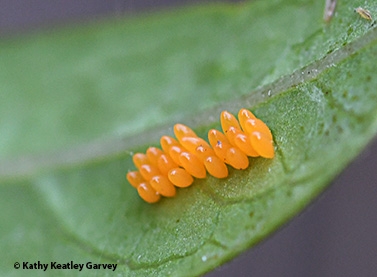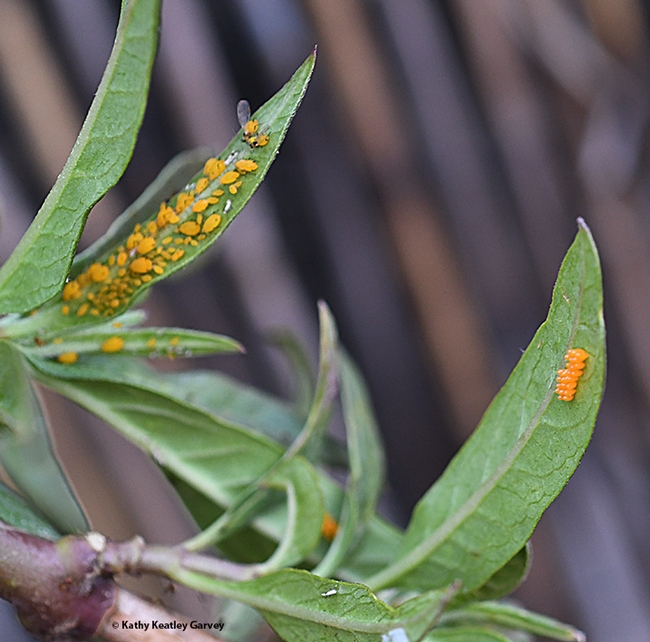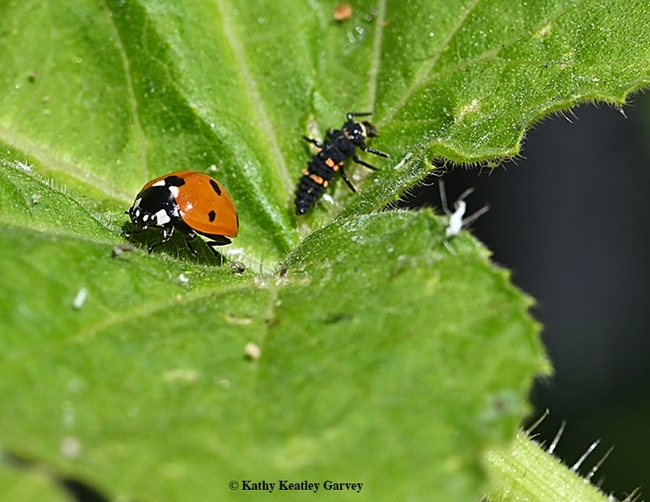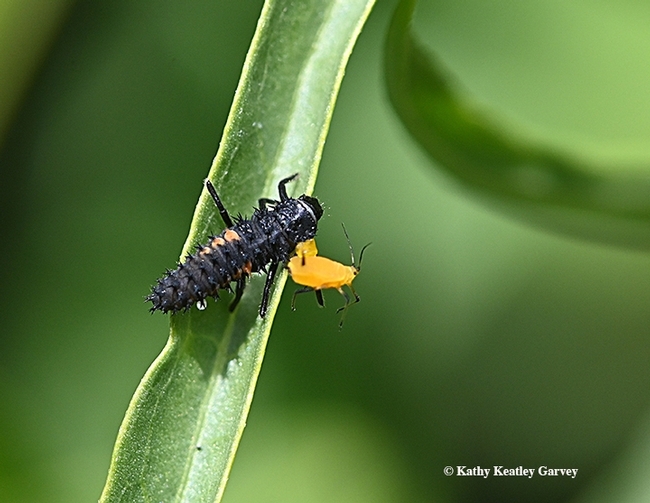
Thoughtful of the moms, isn't it? Moms are like that.
Look on or under your rosebush leaves. Look under your milkweed leaves. See the cluster of tiny yellow eggs? And if you look closely, you'll see those pesky aphids sucking the sap, the very lifeblood, out of the plant.
The lady beetle eggs hatch in about a week. The larvae look like little alligators (many a gardener has killed them, not knowing these are beneficial insects, not pests.) Larvae, too, devour aphids. As adults, lady beetles can polish off about 75 aphids a day.
Lady beetles hibernate during the winter, huddling under leaves, rocks or grasses. (See more about lady beetles on the UC Statewide Integrated Pest Management Program website.)
But for now, you'll see them laying eggs--right where the food source is.
Thoughtful of the moms, isn't it? Moms are like that.
Attached Images:

Good Planning: A lady beetle laid her eggs (right) next to oleander aphids (left) on a tropical milkweed plant. The lady beetle larvae will eat the aphids. (Photo by Kathy Keatley Garvey)

A lady beetle and larva. (Photo by Kathy Keatley Garvey)

A lady beetle larva eating an aphid. (Photo by Kathy Keatley Garvey)